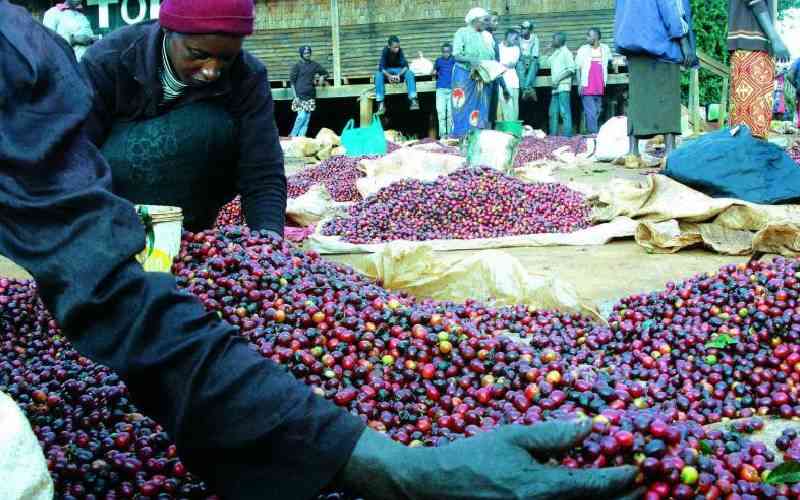By Michael Chepkwony
When the rest of Nandi County residents were celebrating the migration of the rare Sitatunga antelopes to Kingwal swamp in the county, Matthew Kiplel Maiyo thought otherwise.
For hunters, it meant a delicious game meat on the tables while for the crop farmers it was a curse as the animals had arrived to ruin their crops in the shambas.
Saving the antelopes
It was in 1999 that the rare wild animals camped at kingwal swamp in Tulon Location, Nandi Central District and several places within the county.
“I was in Kingwal River and saw two antelopes basking near the swamp. I had heard many talking about the animals and when I saw them, I found it was attractive,” 65-year-old Mr Maiyo notes.
He says majority of hunters began to hunt the animals. “Dogs would chase them and catch one of the female antelopes. The male ones are dangerous and retaliate when hunted and were hardly killed,” he quips.
The hunting continued for a length of time till ten of them remained prompting Mr Maiyo to report to Kenya Wildlife Services (KWS) in time.
“I went to KWS offices in Kapsabet and reported to the then warden, Ms Christine Boit. The officers acted immediately by halting any hunting of the animals and deployed four of its officers to the area to conduct a research aimed at establishing facts about the animals,” he says. “The officers were sent to me and we worked together in gathering facts and taking photographs of the animals.”
They found out that there were about 14 antelopes at the swamp. The female antelopes had greatly declined.
New venture
The report handed to Ms Boit, became a blessing to Mr Maiyo who was then working as a security officer at KBC in Nairobi. He was recommended to be hired as one of the officers to guard the animals that were in danger of extinction.
“I was surprised when I was told that KWS had accepted to hire me as one of their officers. I gladly accepted because that was what I felt I could do best,” he quips.
The report of Sitatunga antelopes was dispatched to KWS headquarters in Nairobi which was then gazetted in East Africa Wildlife Service in 2001.
“Before gazettment, KWS had conducted sensitisation programme and the residents had stopped hunting the animals,” he explains.
The same year, Maiyo was confirmed as a KWS officer and was immediately deployed at kingwal swamp where he executes his duties up to date.
“I ensure no hunting of any kind takes place near or at the swamp and also curb any pollution,” he told The County Weekly. However, the protection of the antelopes is yet to benefit the residents through the tourism industry.
Early September this year, KWS, Federation of Community Tourism (FCT), Kenya Forest Research Institute (KEFRI), and World Bank (WB) toured the region to strategise on establishing tourism centre.
Swamp conservation
KWS Nandi County chief warden Joel Kanda, KEFRI officer Charles Koech, WB representative Erik Siele and chair of FCT Paul Chelugei Lelei educated residents on the importance of conserving swamps and protecting acquatic antelope species in the area.
On his part, Mr Kanda lauded the efforts of Maiyo in ensuring that the animals are protected and said the residents will reap from the conservation soon.
“In three years’ time, tourism will be booming in this county because of the antelopes,” he observed during the visit.
According to KWS statistics, Nandi County is leading with the number of Sitatunga antelopes believed to be about 500 in number.
Mr Maiyo says: “I believe that if everyone would do what is good in every small way, the world will be a good place to live.”
He explains that initially, residents branded him traitor when he spearheaded the conservation of the animals but perceive him now as a hero after they realised benefits were forthcoming.
“When residents realised they will benefit through tourism, they began to see the wisdom in what I did,” he points out.
 The Standard Group Plc is a multi-media organization with investments in media
platforms spanning newspaper print operations, television, radio broadcasting,
digital and online services. The Standard Group is recognized as a leading
multi-media house in Kenya with a key influence in matters of national and
international interest.
The Standard Group Plc is a multi-media organization with investments in media
platforms spanning newspaper print operations, television, radio broadcasting,
digital and online services. The Standard Group is recognized as a leading
multi-media house in Kenya with a key influence in matters of national and
international interest.
 The Standard Group Plc is a multi-media organization with investments in media
platforms spanning newspaper print operations, television, radio broadcasting,
digital and online services. The Standard Group is recognized as a leading
multi-media house in Kenya with a key influence in matters of national and
international interest.
The Standard Group Plc is a multi-media organization with investments in media
platforms spanning newspaper print operations, television, radio broadcasting,
digital and online services. The Standard Group is recognized as a leading
multi-media house in Kenya with a key influence in matters of national and
international interest.









